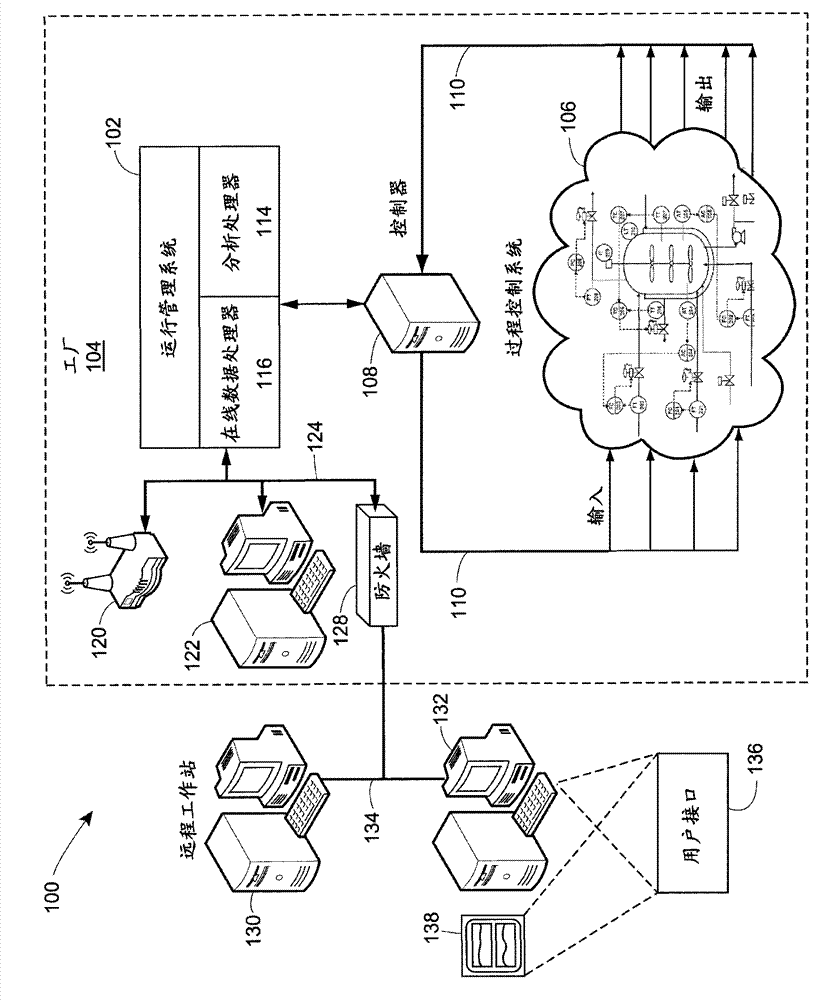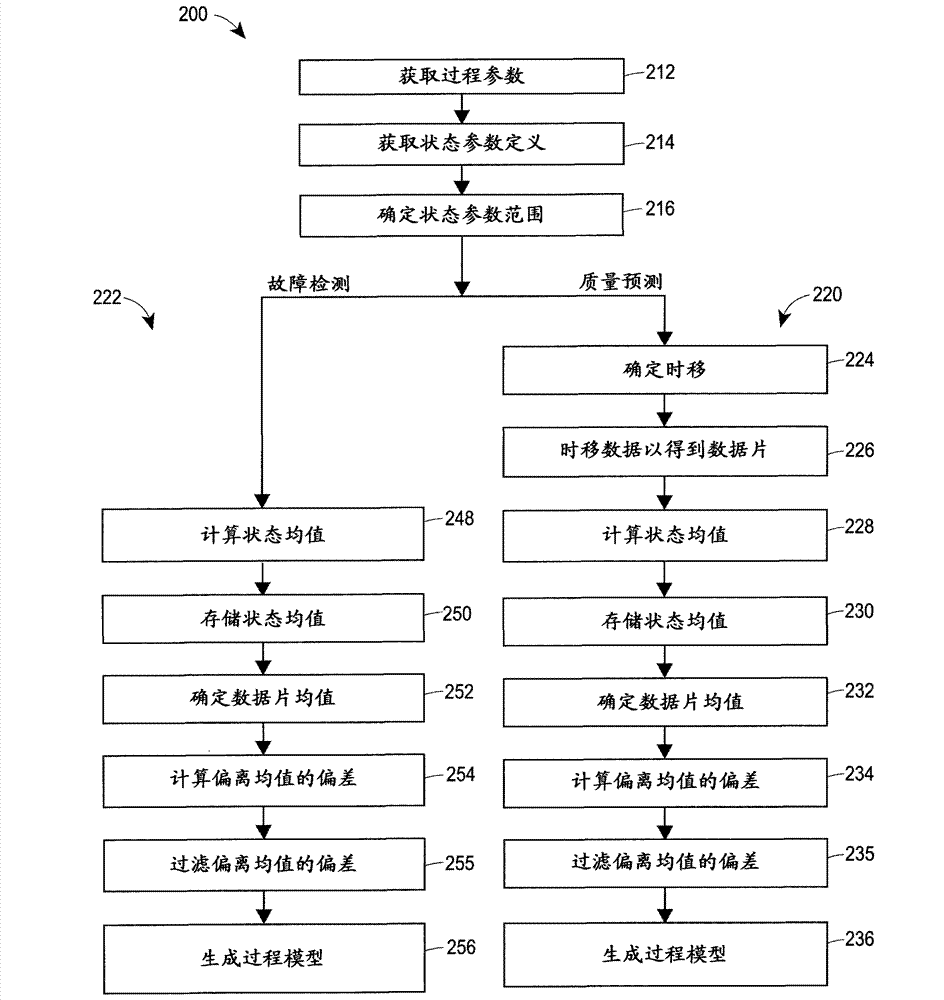Inferential process modelling, quality prediction and fault detection using multi-stage data segregation
A technology of process model and analysis process, applied in the direction of simulator, program control, electrical program control, etc., can solve problems such as continuous processing or batch processing, changes in operating conditions, etc., and achieve the effect of easy maintenance of faults and taking corrective measures
- Summary
- Abstract
- Description
- Claims
- Application Information
AI Technical Summary
Problems solved by technology
Method used
Image
Examples
Embodiment Construction
[0032] figure 1 An exemplary process control system 10 is shown in which advanced techniques for implementing in-line quality prediction and fault detection can be implemented. In particular, the quality prediction and fault detection techniques to be implemented in system 10 generate a series of quality prediction and / or fault detection models from process data and then enable users to use these models to On-line quality prediction and fault detection are performed on a predetermined process state or process stage. Thus, these techniques can be applied or used to perform quality prediction and / or fault detection in continuous or batch processes where yields, product grades, or some other disturbing variable vary regularly without the need for A separate model is generated for each possible process phase or process state.
[0033] figure 1 The illustrated process control system includes a process controller 11 connected to a data historian 12 and to one or more master works...
PUM
 Login to View More
Login to View More Abstract
Description
Claims
Application Information
 Login to View More
Login to View More - R&D
- Intellectual Property
- Life Sciences
- Materials
- Tech Scout
- Unparalleled Data Quality
- Higher Quality Content
- 60% Fewer Hallucinations
Browse by: Latest US Patents, China's latest patents, Technical Efficacy Thesaurus, Application Domain, Technology Topic, Popular Technical Reports.
© 2025 PatSnap. All rights reserved.Legal|Privacy policy|Modern Slavery Act Transparency Statement|Sitemap|About US| Contact US: help@patsnap.com



